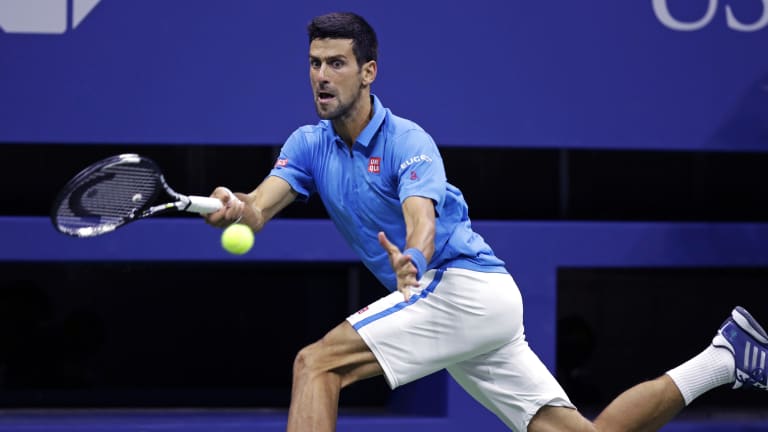NEW YORK—Two weeks before the U.S. Open, at the Western & Southern Open in Cincinnati, heralded doubles star Martina Hingis and her partner CoCo Vandeweghe received a bye and two walkovers before playing their first match of the tournament in the semifinals. Novak Djokovic’s path to the final four in Flushing Meadows hasn’t been that easy—he has had to log six hours and 26 minutes of actual tennis over five rounds. But even in that length of time, nearly the duration of one five-set marathon, we’re getting a clearer picture of Djokovic’s actual form.
Despite receiving a walkover win in the second round and benefiting from two retirements—the latest on Tuesday night against No. 9 seed Jo-Wilfried Tsonga—we’ve seen Djokovic in a number of difficult tennis situations. And when he’s actually been forced to play, he’s done well in each tricky scenario.
In the first round, where nearly half of Djokovic’s nine completed sets have taken place, the top seed was far from his best against Jerzy Janowicz, who years ago might have made the Serb pay for his lethargy. But although Djokovic made a poor first impression, he nonetheless gutted out a four-set win, and in the process shook off some of the cobwebs of inactivity since the Rio Olympics.
In the fourth round, Djokovic seemed to be cruising to victory against Kyle Edmund before a stumble with the finish line in sight. But instead of letting the match linger like he did in the first round, Djokovic answered Edmund’s late break of serve with a pivotal one of his own, and continued in his path through the bracket with a three-set win.
Tonight, we thought, would be Djokovic’s first true test. His opponent, Tsonga, is an experienced and excellent hitter who was at his all-court best against Jack Sock in his previous match. The Frenchman unfortunately succumbed to a right knee injury after dropping the first two sets, 6-3, 6-2, but when he was at full capability, he got Djokovic’s attention. And after a sizable stretch of un-Djokovic-like tennis, we saw calm yet commanding game the 12-time Grand Slam champion has used to ascend into the stratosphere of the sport.
